(Journal Entry from Mrs. Chippy)
It has now been over 24 hours since we last saw land – the Captain promises that we are right on track, but I sure wish I had some personal navigating skills to know for sure. I'm watching all these albatross that are with us out here in the middle of the Pacific and can't help but wonder how they can find their way – no GPSA Global Positioning System (GPS) is a satellite-based navigation system used to track the location or position of objects on the Earth’s surface., no radar, etc – just the equipment they were born with in their brain. Pretty amazing. Here is our current position and some weather information.
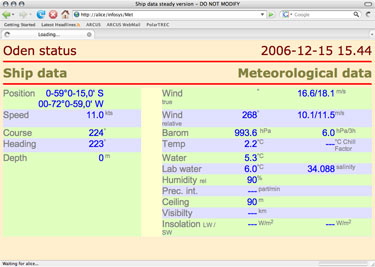
Latitude: 59 degrees 15 minutes southLongitude: 72 degrees 59 minutes southWind 16.4 meters per second (another great math test here – can you figure out how to convert meters per second into some other measure that is something you could read on a car speedometer? Think either kilometers per hour (KPH) or miles per hour (MPH).Temp: 2.3 degrees celciusSky is cloudy with light rain mixed with snowSunrise – 4:00 AMSunset – 12:00 midnightThe ocean has calmed down some today and we're not rocking nearly as much as last evening – probably only 8 degrees side to side at the extreme. Last night there were a few moments where it felt like I was going to roll right of my hammock.
Its been an exciting day for birdwatching – I was able to hang out a bit the Bill Everett, a marine scientist and bird expert from the San Diego Sea World Research Institute. He is in the picture wearing the plaid shirt and hat, talking to ice scientist Hongjie Xie, teacher Ute Kaden, ice scientist Bercu Cicek, and Chilean teacher Sandra Williams
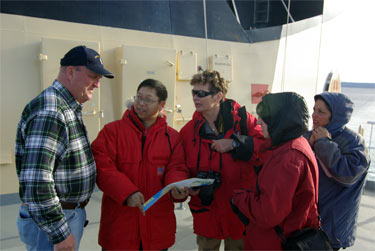
One interesting fact is that early sailors believed that albatross were the spirits of drowned sailors – and so even though they are relatively easy to capture (on shore just walk up and club them) they didn't out of respect for the mariners that had died in these treacherous seas. They also are very dependent on wind in order to fly (since it howls here all the time I can see they are perfect for this environment.) On rare calm days they have to settle on the ocean surface or some landmass and wait for more wind. They have been known to live for up to 50 years and mating pairs produce 1 offspring every two years on remote ocean islands.
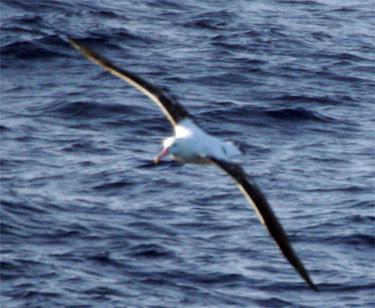
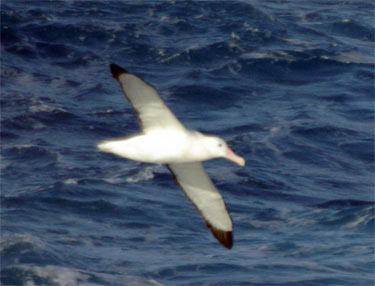
This is a wandering albatross – the largest flying bird in the world. They can weight up to 20 pounds and they can measure almost 12 feet from wingtip to wingtip – amazing! All albatross are incredible gliders, soaring gracefully amongst the waves in search of their favorite meal – squid or small fish – which they can capture in flight by dipping into the sea.
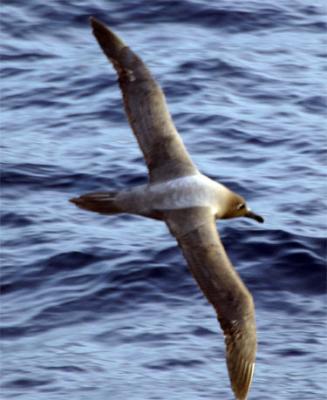
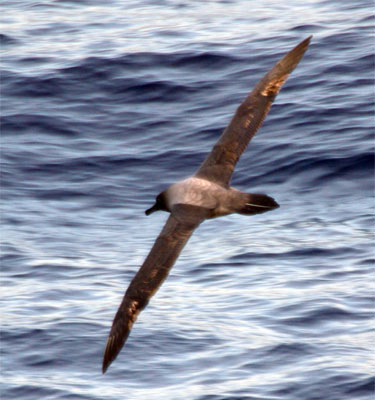
Pretty easy to tell these apart from the first eh? This is a light mantled sooty albatross – the mantle is the area on the back between the wings and you can probably see how it got its name. These are not as big as the wandering albatross – but still can have a wingspan of over 7 feet.
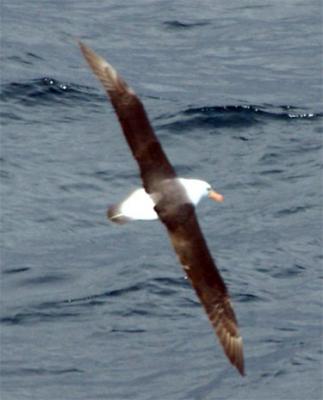
This is another of the blackbrowed albatross – these have been with us since we reached Terra Del Fuego a couple days ago – and you can find more pictures in my post from 12.14. Their wingspan can be up to 8 feet – so they are slightly larger than the sooty but smaller than the wandering. Compare the photos of the wandering albatross and the black browed to see if you can find at least one main characteristic to tell them apart.
Notice anything with the wings – they both have identical coloring except that the wandering albatross has a completely white backside and separate black wings, while the black browed albatross has wings that are a unified streak of black with their bodies being white on the head and tail.
There are two other types of albatross that we hope to see during the coming weeks – the grey headed albatross and the royal albatross. Keep your eyes on the posts and we'll see if I can't come up with a shot of those as well. Back out to my observing post in the wind and snow – perhaps after a quick visit to the galley for a fresh mug of hot chocolate – every polar bear's favorite warm-up drink.
Talk to you tomorrow.


Comments